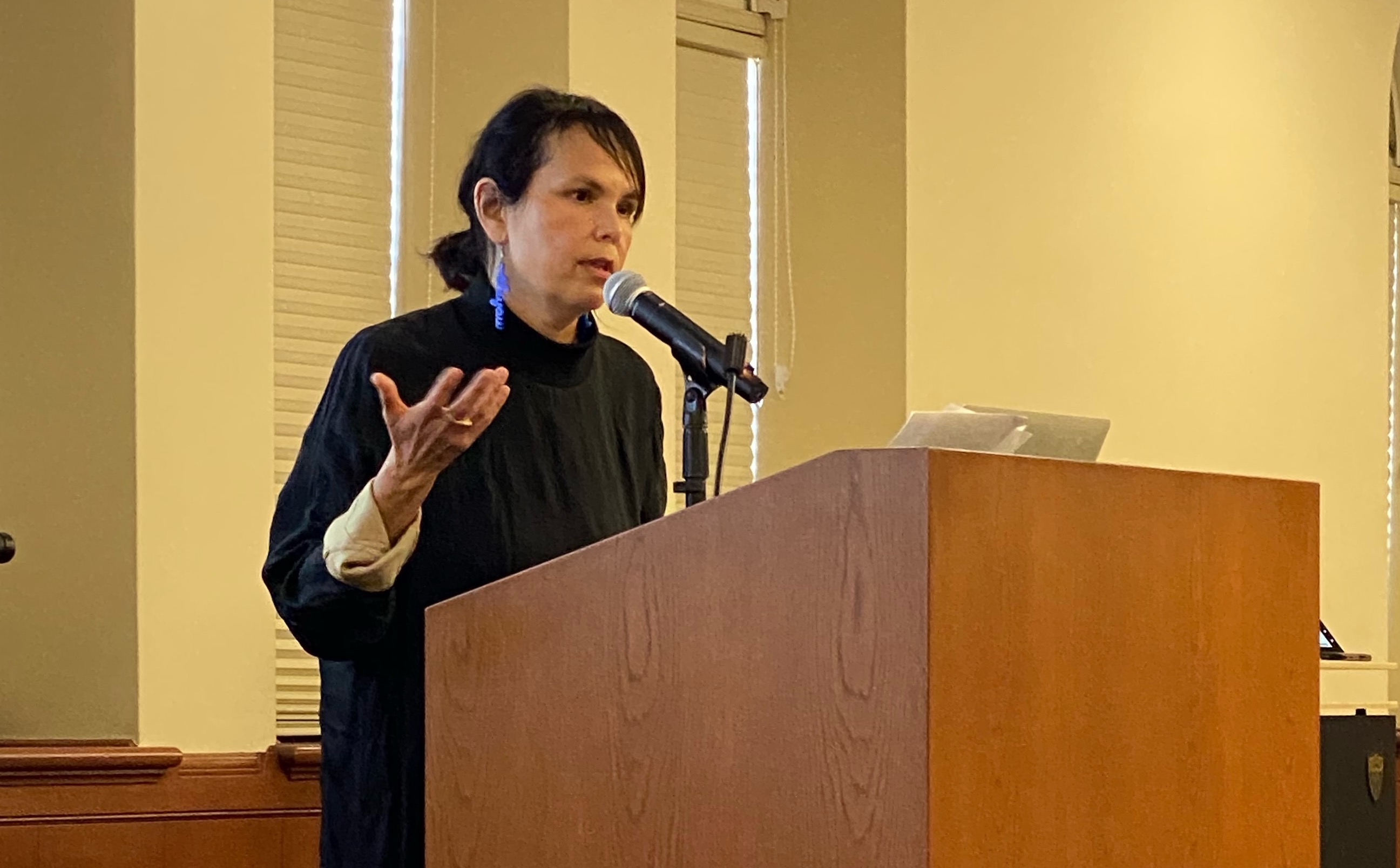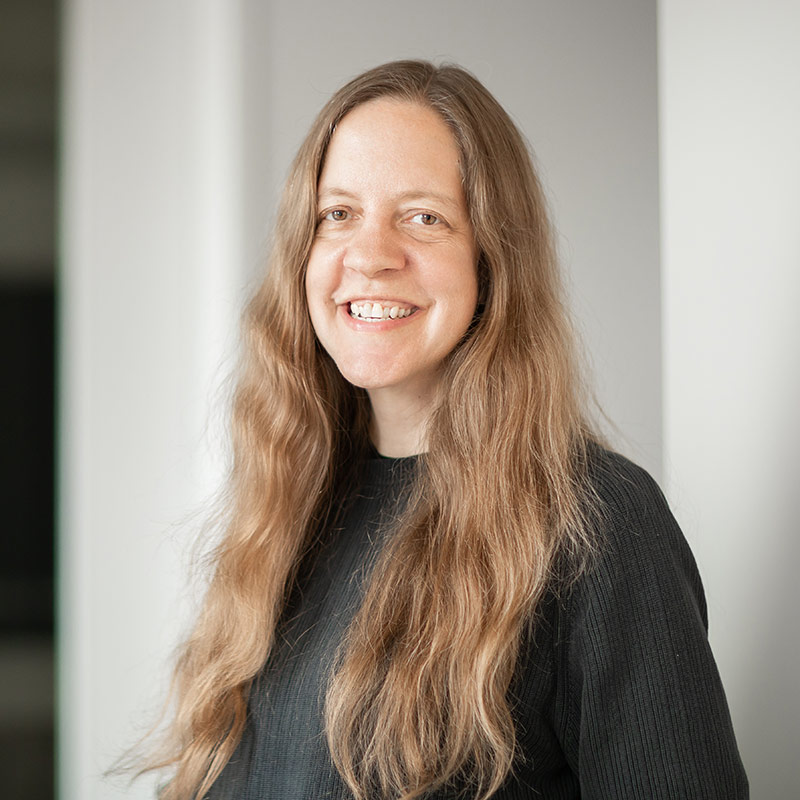Lorena Sekwan Fontaine Lectures About Linguistic and Cultural Genocide and Redress in Canada

“Redress for Linguistic Genocide in Canada”
Lorena Sekwan Fontaine (University of Winnipeg/San Diego State University)
February 17, 2022
For the first lecture in its series of spring events, the USC Dornsife Center for Advanced Genocide Research welcomed Professor Lorena Sekwan Fontaine, who is currently serving as the Fulbright Canada Research Chair in Indigenous Studies at San Diego State University and is an Associate Professor in Human Rights at the University of Winnipeg. From the late 19th century until 1996, Indigenous children were forcibly placed into residential schools across Canada. Professor Fontaine’s lecture, entitled “Redress for Linguistic Genocide in Canada,” examined the legacy of cultural and linguistic genocide and Canada’s attempt to provide redress.
Professor Fontaine began the lecture by introducing herself in her ancestral language of Ojibwe, which her family speaks on her father’s side. On her mother’s side, they speak Cree. She reflected on her own family’s history with the residential school system. Both her parents and grandparents were forced to attend residential schools. Professor Fontaine weaved much of her lecture around the words and experiences of Theodore Fontaine, her uncle, who attended the Fort Alexander Residential School from 1948 to 1958 and then attended the Assiniboia Residential School in Winnipeg from 1958 to 1960. When first forced into a residential school, he was seven years old and only spoke his ancestral language of Ojibwe. He became an advocate for residential school survivors, an author of a memoir entitled Broken Circle: The Dark Legacy of Indian Residential Schools, and in over 11 years, he attended 1,500 gatherings, speaking about his experiences and encouraging others to do the same.
Covering the historical background of the residential school system in Canada, Professor Fontaine pointed out that it was the 1879 boarding school established in Carlyle, Pennsylvania that served as the model for hundreds of residential schools in the United States and Canada. In Canada, the first schools were established in the 1880s, and the last one closed in 1996. The goal of the residential school system was to civilize and assimilate Indigenous children that the government saw as savage, sometimes not even human, ultimately eradicating Indigenous language and culture. The government wanted the land where First Peoples had territorial rights. The residential school system was one part of the government’s strategy, which also included laws and policies restricting the rights of Indigenous peoples. Parents who wanted to remove their children from residential schools faced imprisonment, fines, or both. It was a crime to refuse to send children to residential schools.
In excerpts Professor Fontaine shared from Theodore Fontaine’s memoir, he describes brutal treatment and the shame he felt at being Indigenous, at having an Indigenous language, of being part of Indigenous culture. Professor Fontaine discussed the predominance, impact, and intergenerational legacy of that shame and its connection to languages not being passed on and this history not being taught. Of 90 different Indigenous languages that are currently spoken, it is estimated that three will survive -- Cree, Ojibwe, and Inuktitut. If something isn’t done in the educational system to correct the harms from residential schools and revitalize Indigenous languages, these languages will also die, Professor Fontaine asserted. Some Indigenous communities have only one or two speakers left already. The legacy of shame is not only tied to the endangerment of Indigenous languages but to addiction and suicide rates, the physical and sexual abuse that took place in the residential schools and the intergenerational impacts of that abuse, the impact of the erasure of Indigenous identity, and the shame associated with cultural traditions and practices. Within families, there is silence about this traumatizing history. Professor Fontaine described how she never learned what her father experienced, but she knew that he was suffering from nightmares every night. She learned about this history when she was in her 20s by reading library books and memoirs and listening to the testimonies of other survivors.
In her discussion of redress, Professor Fontaine explained that in the 1990s, Indigenous residential school survivors began filing claims against the government and churches for the abuses they endured in the residential school system. These court claims drove the redress that happened in Canada. In the 1990s, there were a few hundred claims. The federal government released a statement of reconciliation in 1998, along with a $350 million healing fund. Churches submitted apologies beginning in 1986. By 2003, there were 10,000 claims against the federal government and the churches, the largest number of court claims in Canada on one issue. These were combined into a class action suit. In 2006, the Indian Residential School Settlement Agreement resolved the suit. Part of the settlement agreement required a Truth and Reconciliation process with a mandate to document and inform Canadians about what happened in the schools.
The Truth and Reconciliation Commission traveled throughout Canada, holding national, local, and community events, hearing from survivors, their families, communities, and anyone affected by the residential school system. The commission ultimately gathered 7,000 testimonies, which are available for students and scholars at the National Centre for Truth and Reconciliation. Part of commission’s work was to examine the deaths and disappearances of Indigenous children in the residential school system. They identified 80 places in Canada where there are likely unmarked mass graves holding the bodies of these missing Indigenous children. These graves are just starting to be unearthed.
In a six-volume final report, the Truth and Reconciliation Commission defined what happened in residential schools as cultural genocide. Professor Fontaine enumerated many strategies the government used to try to eradicate Indigenous culture, including the seizure of land, the forcible transfer of Indigenous populations, restrictions on movement, the persecution of spiritual leaders, forbidding of ceremonies, confiscation and destruction of sacred items, and most significantly, preventing families from transmitting Indigenous cultural values, identity, and language to the next generation. Professor Fontaine concluded the lecture by discussing Theodore Fontaine’s legacy. She powerfully argued about the necessity to learn to love and cherish Indigenous cultural identity, to teach children the harms of hatred, to share experiences of collective trauma with survivors of other genocides, to remove the shame of being Indigenous and speaking Indigenous languages, and to embrace what it is to be Indigenous.
A lively discussion followed the lecture about many topics, including intergenerational trauma, the way this history surfaces in her generation, digital storytelling as a way of sharing this history, the status of Indigenous language rights in Canada, the need for Indigenous language instruction in schools, how the Holocaust serves as a reference point for the impact of the residential schools on survivors and their descendants, the need for teacher training for the teaching of Indigenous languages, and the ways Indigenous youth today are still being impacted by the racism and discrimination that were foundational to the residential school system
Summary by Martha Stroud
Like this article? Get our e-newsletter.
Be the first to learn about new articles and personal stories like the one you've just read.
